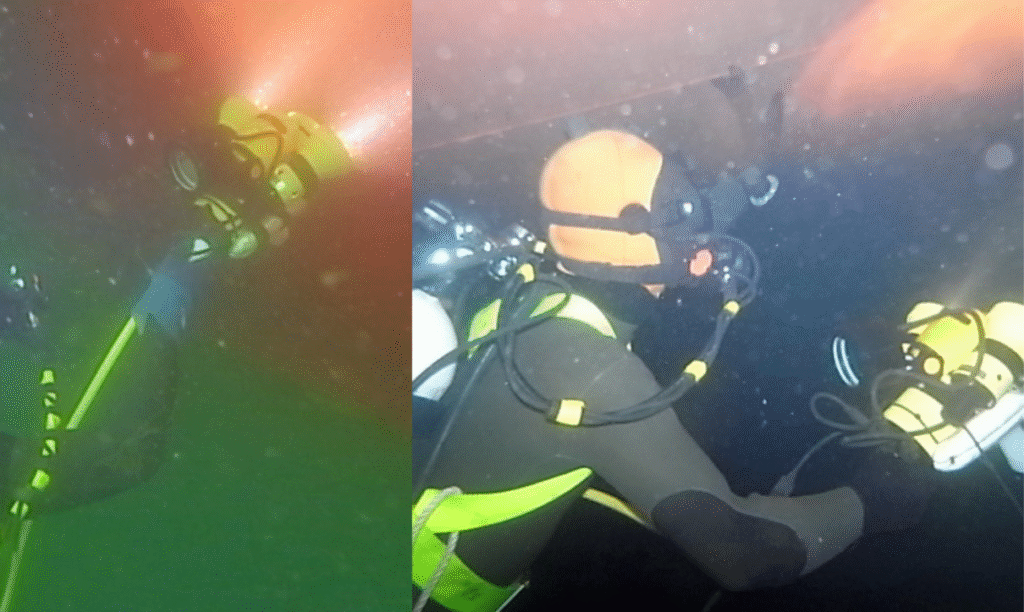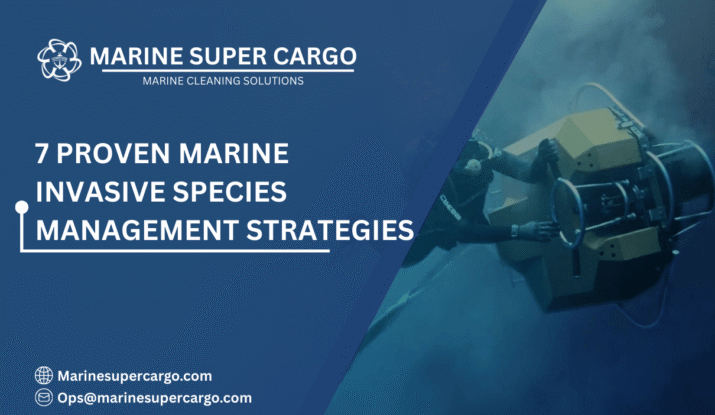The ocean may look endless and resilient, but even small disturbances can ripple across entire ecosystems. One of the biggest hidden threats to marine health today is the spread of invasive species through shipping. Organisms hitch rides on ballast water, hulls, or cargo and then colonize new regions where they don’t belong.
This challenge has made Marine Invasive Species Management a global priority. For ship owners and operators, managing these risks is not just about protecting the environment—it’s about staying compliant, avoiding heavy fines, and operating efficiently in an increasingly regulated industry.
In this article, we’ll break down why Marine Invasive Species Management matters, the risks of inaction, global regulations, cost implications, best practices, and future innovations shaping a safer, cleaner shipping industry.
What Are Marine Invasive Species?
Marine invasive species are organisms transported by human activity—especially shipping—that establish themselves in new waters, often disrupting local ecosystems. Examples include:
- Zebra mussels in North America, spread by ballast water, clog pipes and damage infrastructure.
- Asian kelp is invading European coasts, outcompeting native seaweed.
- Comb jellyfish in the Black Sea, which devastated local fisheries.
Left unchecked, these invaders can reduce biodiversity, harm fisheries, and even disrupt coastal economies.
Why Marine Invasive Species Management Matters
Think of your ship as a floating city—it carries not just cargo, but also hidden passengers like algae, mussels, or microorganisms. If released into the wrong environment, these stowaways can:
- Destroy habitats: Invasive species displace native organisms.
- Damage economies: Fisheries, aquaculture, and tourism industries can collapse.
- Hurt reputations: Non-compliant vessels risk fines, bans, and loss of trust.
- Increase costs: Fouled hulls mean higher fuel use and expensive emergency cleanings.
Marine Invasive Species Management isn’t just environmental responsibility—it’s operational survival.

Key Sources of Invasive Species
1. Ballast Water
Ships use ballast water for stability, but it often contains larvae, plankton, and pathogens. When discharged into new waters, it can release invasive species.
- The IMO Ballast Water Management Convention requires ships to treat ballast water before release.
2. Hull Fouling
Marine organisms attach to ship hulls during voyages. When ships dock, these species can colonize new habitats.
- Regular in-water cleaning and inspections (CleanShip.co) reduce this risk.
3. Cargo & Containers
Bacteria, fungi, or insects can travel in damp cargo holds or containers. Proper sanitation protocols are essential.
4. Waste Discharge
Bilge water and greywater may contain microorganisms that disrupt local ecosystems if improperly treated.
- MARPOL guidelines (Marine Insight – MARPOL Convention) regulate safe discharge.
Global Regulations Shaping Marine Invasive Species Management
International Standards
- IMO Conventions: Cover ballast water, antifouling systems, and waste management.
- IMCA Guidelines: Provide best practices for contractors in underwater cleaning (IMCA).
- IAPH Initiatives: Encourage ports to adopt standardized biosecurity protocols (IAPH World Ports).
Regional Rules
- Australia & New Zealand: Strict hull cleaning requirements with penalties for non-compliance.
- European Union: Mandates invasive species reporting and monitoring.
- United States: The Coast Guard enforces ballast water standards under the National Invasive Species Act.
- Asia-Pacific Ports: Singapore and Japan demand documented in-water cleaning and inspection plans.
Compliance with these rules ensures smooth port entry and reduces operational risk. Also, read about underwater hull cleaning in Ghana.
The Costs of Ignoring Biosecurity
Skipping Marine Invasive Species Management comes with heavy price tags:
- Direct Costs: Emergency hull cleaning, ballast water fines, and port delays.
- Indirect Costs: Fuel inefficiency from fouled hulls, higher maintenance, and reputational damage.
- Case Example: A shipping company was fined $150,000 in New Zealand for untreated ballast water, plus additional costs for emergency cleaning.
When you compare these losses with proactive management costs, the choice becomes clear: prevention is cheaper than cure.
Best Practices in Marine Invasive Species Management
1. Ballast Water Treatment
- Install onboard treatment systems.
- Conduct ballast water exchange in deep seas, far from coastal habitats.
2. Hull Cleaning & Inspection
- Adopt proactive in-water cleaning programs.
- Use eco-friendly antifouling coatings to prevent organism attachment.
- Conduct hull coating inspections to maintain surface integrity.
3. Wastewater Filtration
- Treat bilge and greywater before discharge.
- Use containment and filtration systems to prevent spread.
4. Crew Training
- Educate crews on handling ballast water, cleaning protocols, and waste management.
- Include biosecurity procedures in standard operations.
5. Port Collaboration
- Work with ports following IAPH guidelines for standardized inspection and reporting.
- Share biosecurity data across regions to predict risks.
✅ 4 Things to Check for Safety at Sea pic.twitter.com/dAxhJQ2i6U
— Marine Super Cargo (@Marinsupercargo) September 14, 2025
Case Studies
Case 1: European Cargo Fleet
A European fleet implemented regular in-water hull cleaning and ballast water treatment. Results:
- 12% reduction in fuel use
- $200,000 annual savings in fines and downtime
Case 2: Pacific Port Authority
A port authority in Australia enforced strict inspection rules. Ships adopting Marine Invasive Species Management practices enjoyed faster clearance times and fewer penalties.
These examples prove that prevention saves both money and reputation.

Future of Marine Invasive Species Management
The future is tech-driven, with innovations making biosecurity smarter and more effective:
- AI Monitoring Systems: Predict hotspots for biofouling and invasive species spread.
- Autonomous Hull Cleaning Robots: Clean and inspect simultaneously with minimal downtime.
- Smart Sensors in Ballast Tanks: Detect organisms in real-time for rapid treatment.
- Next-Gen Coatings: Nanotechnology-based antifouling paints reduce maintenance.
- Global Digital Reporting: Blockchain-enabled records for transparent compliance across ports.
These innovations make Marine Invasive Species Management not just feasible, but transformative for shipping.
Conclusion
Marine Invasive Species Management is no longer optional—it’s essential. Ships that fail to comply face financial, environmental, and reputational damage.
Key takeaways:
- Proactive ballast water and hull cleaning reduces the spread of invasive species.
- Compliance with IMO, MARPOL, and regional rules avoids fines and delays.
- Emerging technologies make biosecurity more efficient, eco-friendly, and cost-effective.
By working with experts like CleanShip.co, ship operators can ensure sustainable operations and long-term compliance.
FAQs:
Q1. What is Marine Invasive Species Management?
It’s the process of controlling, preventing, and monitoring invasive species spread through ships, ensuring compliance and ecosystem protection.
Q2. Why is ballast water a biosecurity concern?
Ballast water can contain microorganisms, larvae, and invasive species that disrupt ecosystems when discharged.
Q3. How does hull cleaning help reduce risks?
It removes biofouling organisms before they spread, improving efficiency and compliance.
Q4. What are the penalties for non-compliance?
Penalties include fines, port delays, mandatory emergency cleaning, and potential legal liabilities.
Q5. What future solutions are being developed?
AI, autonomous cleaning robots, smart sensors, and eco-friendly antifouling coatings are leading innovations.


